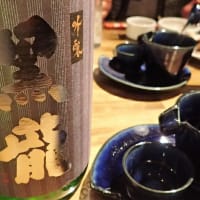Ethylene: The Ripening Hormone
Ethylene is a small hydrocarbon gas. It is naturally occurring, but it can also occur as a result of combustion and other processes. You can't see or smell it. Some fruit will produce ethylene as ripening begins. Apples and pears are examples of fruit that produce ethylene with ripening. Ethylene is responsible for the changes in texture, softening, color, and other processes involved in ripening. Fruits such as cherries and blueberries do not produce much ethylene and it doesn't influence their ripening.

Ethylene is thought of as the aging hormone in plants. In addition to causing fruit to ripen, it can cause plants to die. It can be produced when plants are injured, either mechanically or by disease.

Ethylene will cause a wide range of effects in plants, depending on the age of the plant and how sensitive the plant is to ethylene. Ethylene effects include fruit ripening, loss of chlorophyll, abortion of plant parts, stem shortening, abscission of plant parts, and epinasty (bending of stems). Ethylene can be either good or bad, depending on what commodity you work with. It is used in a positive manner in fruit ripening, for example. It can also cause damage in crops.

Examples of damage might include yellowing of vegetables, bud damage in dormant nursery stock, or abscission in ornamentals (leaves, flowers drop off). Often two of the important items to know are
1) if a crop naturally produces a lot of ethylene and 2) if it is responsive to ethylene. Responsiveness will depend on 1) the crop,
2) the stage of plant development,
3) the temperature,
4) the concentration of ethylene, and
5) the duration of exposure.

Ethylene gas is used commercially to ripen tomatoes, bananas, pears, and a few other fruits postharvest. Ethylene can be explosive if it reaches high concentrations, so it has to be used cautiously. Several commercial liquid products release ethylene (ethephon, trade name Ethrel). These are only used preharvest. There are three main ways to produce ethylene: 1) gas from a cylinder, 2) catalytic generator, and 3) ethephon. Other sources of ethylene include ripening fruit, exhaust from internal combustion engines/heaters, smoke (including cigarettes), welding, rotting vegetation, natural gas leaks, and manufacturing plants of some kinds.

There are several anti-ethylene chemicals. Silver thiosulfate (STS) is used on flowers. Aminoethoxyvinyl-glycine (AVG, trade name ReTain) blocks ethylene synthesis. It is applied preharvest. The fruit (plant) will not produce much ethylene, so there is not an ethylene response. The ethylene blocker 1-methylcyclopropene (1-MCP, trade name EthylBloc) blocks ethylene by binding to its receptor. It is applied postharvest. The fruit (plant) may still produce some ethylene, but there is no response to the ethylene.

2) kitagawa tubes, or equivalent;
3) other types of chemical sensors; or
4) another plant that is sensitive to ethylene.





















※コメント投稿者のブログIDはブログ作成者のみに通知されます